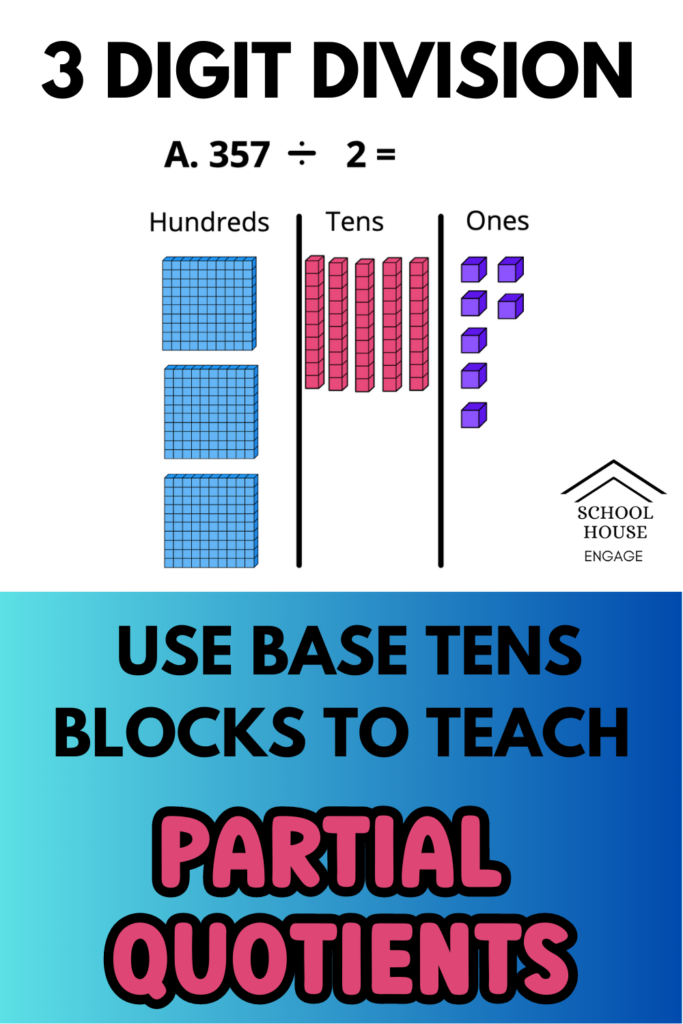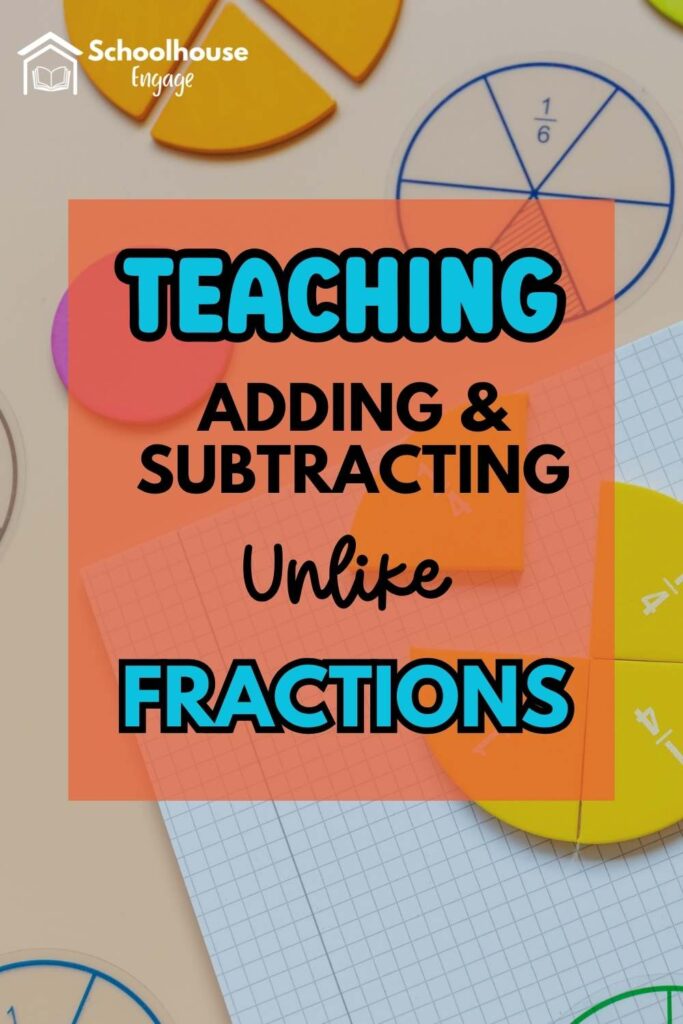Any teacher knows that Math Mnemonics is an essential part of math instruction. There are so many rules to remember in math that it can get overwhelming. Teaching math mnemonics is especially important for your students who have dyscalculia.
What are math mnemonics?
A math mnemonic is a tool to improve your ability to remember something. It can be a rhyme, image, acronym, or saying to recall information.
These math mnemonics will help your upper-grade students to be successful in remembering the steps to solve problems.
Math Mnemonics to Use in 5th Grade
#1 Denominator is Always Down
When first introducing fractions, help students remember which number is the denominator and numerator. The denominator is always down.
#2 The King and the Poor Man
When dividing fractions, teach your students about the king. The king is the numerator when using a fraction to divide. He also is written first in a normal division problem.
- The king sits on a throne
- The king always walks first
- The king lives in a castle
For example, in the problem 13/4. The king is 13.
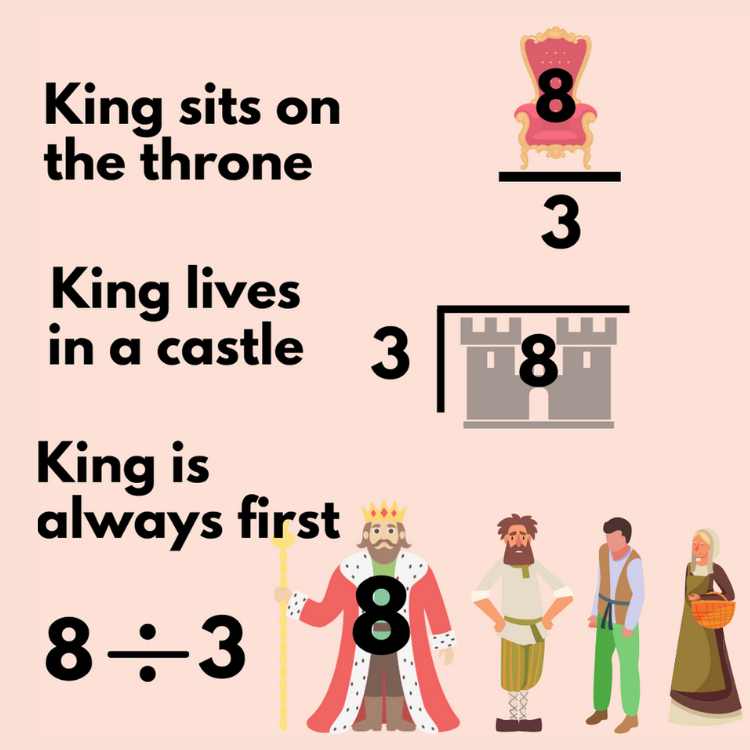
#3 Changing a Mixed Number to an Improper Fraction Makes you MAD!
When changing a mixed fraction to an improper fraction, it will make you MAD! Multiply the denominator with the whole number, then add it to the numerator, and lastly write the denominator.
- M- Multiply
- A- Add
- D- Denominator
I always like to joke with my students by telling them to please not be mad that they have to change the improper fraction to a mixed number
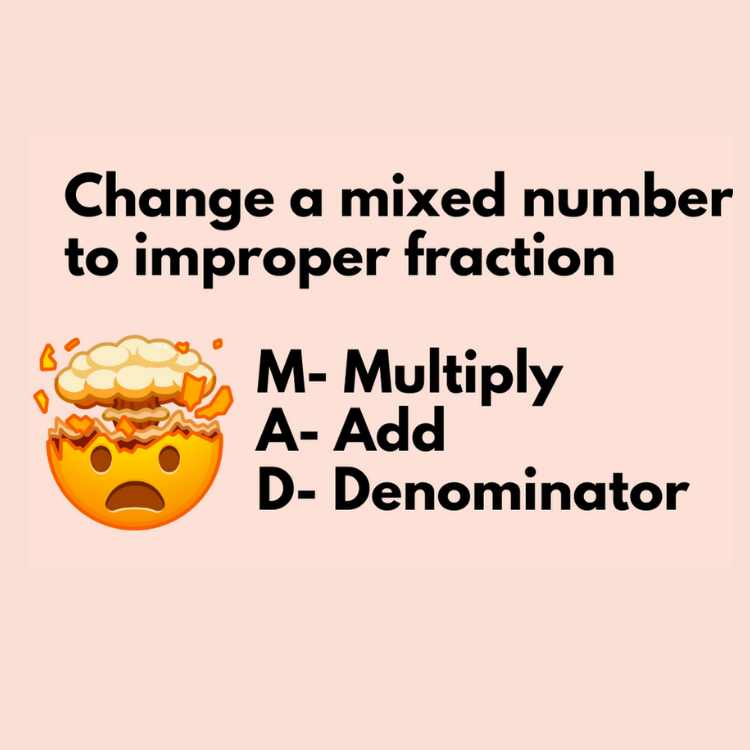
#4 Common Denominators Dressing Up on Halloween
It’s Halloween at Fraction Elementary, and two friends have decided that they want to dress the same. That is why both fractions need to have the same denominator to add and subtract them, so they look alike, even though they are not related. To learn more about how I teach my students how to add and subtract unlike fractions using visual models, read my blog post.
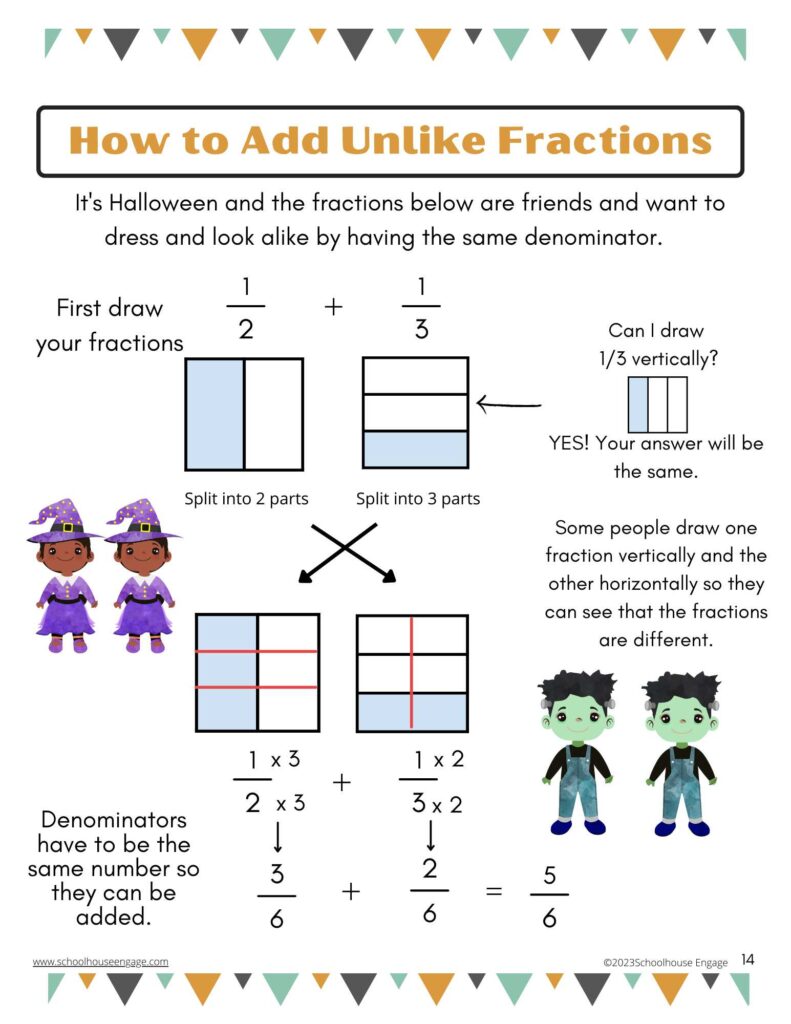
#5 Multiple Family to Find Common Denominators
When adding and subtracting fractions with unlike denominators, teach your students about the multiple family.
For example, in the problem ½ + ⅛, many students will want to multiply the denominators 2 and 8. It isn’t necessary because 2 and 8 are part of the same multiple family.
The multiples of 2 are 2,4,6,8,…
If the denominators are part of the same multiple family, use the bigger denominator to find equivalent fractions.
I call the larger denominator a sibling, which leads me to my next mnemonic.
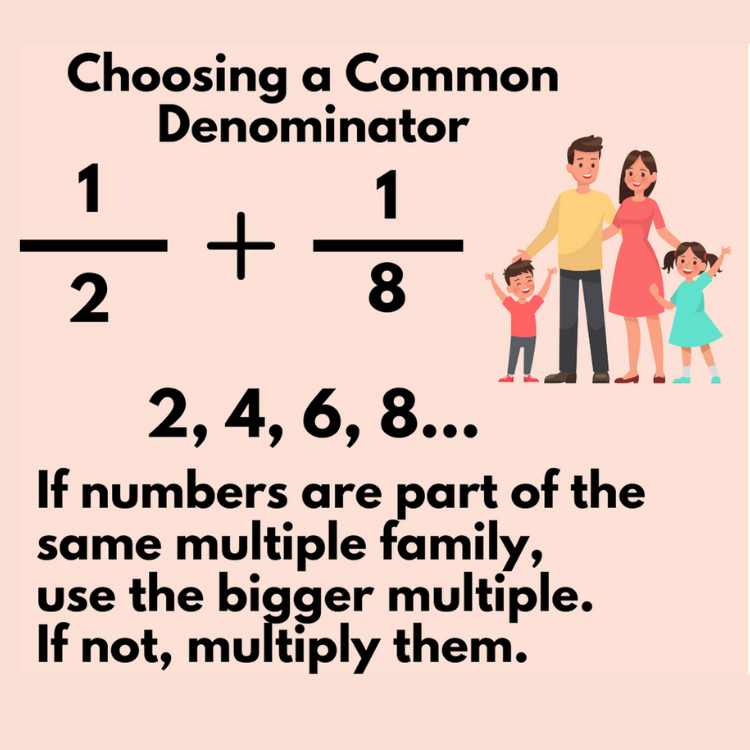
#6 Denominators as Big Sis, Little Sis
Don’t little siblings always want to be like their older siblings? They see their older sibling playing with a basketball, now they want to play with a basketball. They see their sibling eating chips, now they want to eat chips.
Well, denominators that are in the same multiple family are the same way.
When adding and subtracting unlike fractions, if the larger denominator is a multiple of the smaller one, use the larger one to find the equivalent fractions. Why? Because the smaller multiple is the little sister and wants to be just like the larger multiple.
You can also use Big Bro, Little Bro.
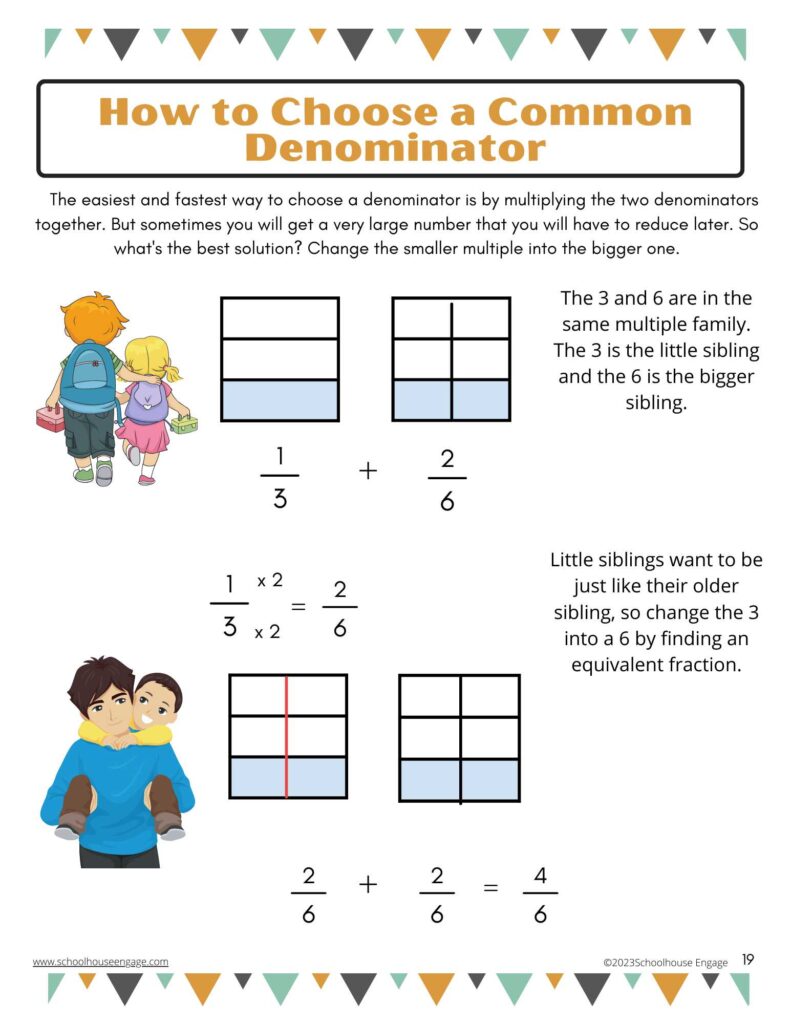
#7 Denominators as Cousins
What if you are adding or subtracting fractions with unlike denominators, and the denominators are not a multiple of each other?
In that case, the denominators are no longer siblings, they are cousins and they will need to be multiplied. For example, 1/3 + 1/5
3 and 5 will need to be multiplied because they are not part of the same multiple family.
#8 Enemies
If the denominators are large numbers, and it’s a pain to multiply them, then they are enemies and you will have to find the least common multiple. For example for the problem 5/12 + 5/8 the least common multiple is 24.
#9 The Divisor Wears a Visor
When you teach the names of the parts in a division problem, remember that the divisor wears a visor. Why? Because he lives outside of the castle or house and outside it is really hot and sunny.
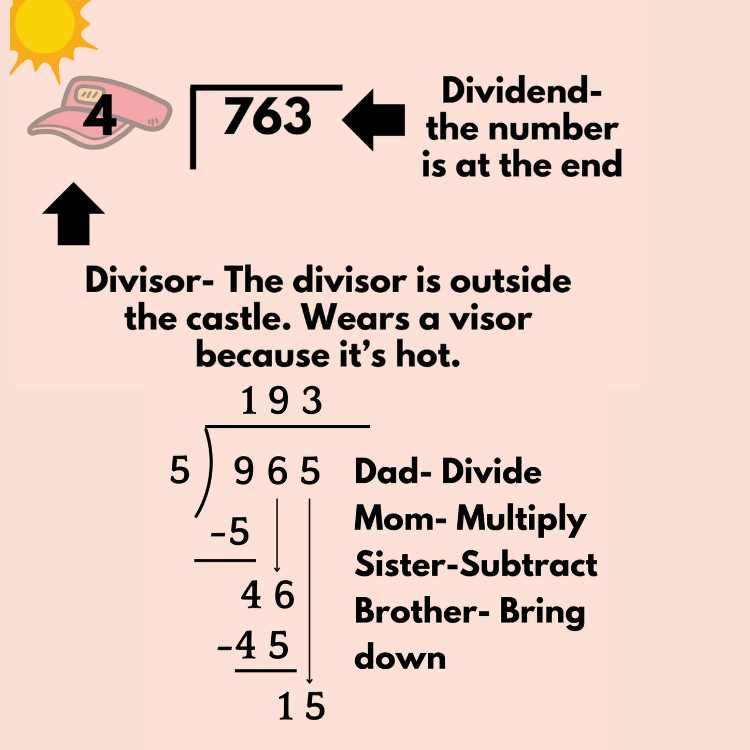
#10 Mom, Dad, Sister, Brother
Use the acronym of Dad, Mom, Sister, and Brother when teaching long division.
- Dad- determine how many times a number will go into the dividend
- Mom- multiply
- Sister- subtract
- Brother- bring down
#11 The Dividend is Always at the End
The dividend comes after the divisor. It is always at the end, and the dividend has the word end in it.
#12 Rounding Numbers
If a problem is asking to round a number to the nearest tenth, then the tenth should be underlined. The tenth is going to ask the number for advice. Should he stay the same, or go up? This mnemonic helps:
5 or more, raise the score
4 or less, let it rest

#13 King Gallon
King Gallon had 4 Queens (Quarts).
Each Queen had 2 Princesses (Pints).
Each Princess had 2 Cats (Cups).
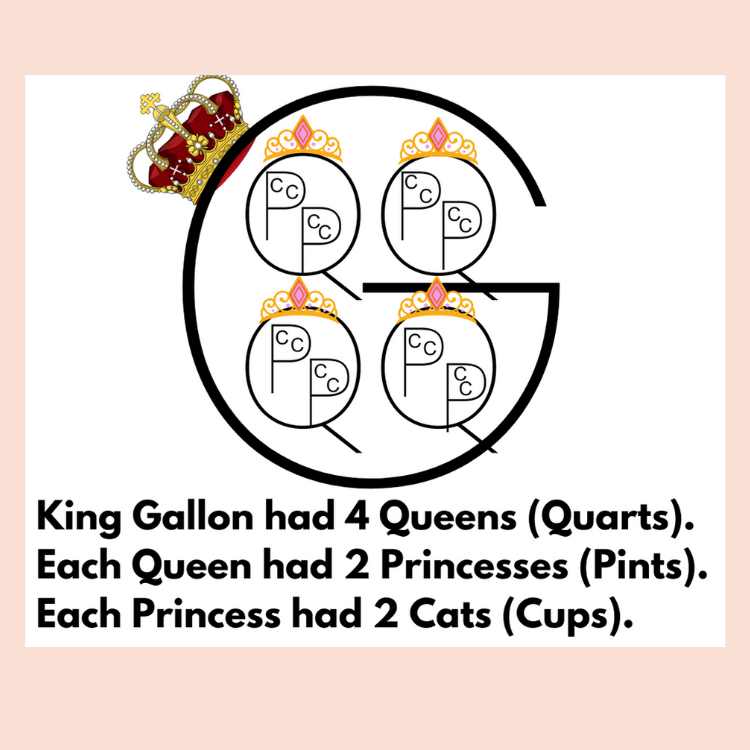
Mnemonics are a great way to help students remember the steps to solve problems. They are very useful for your students who struggle in math. If you are looking for a resource to help your student with fractions, check out my visual model fraction resource.
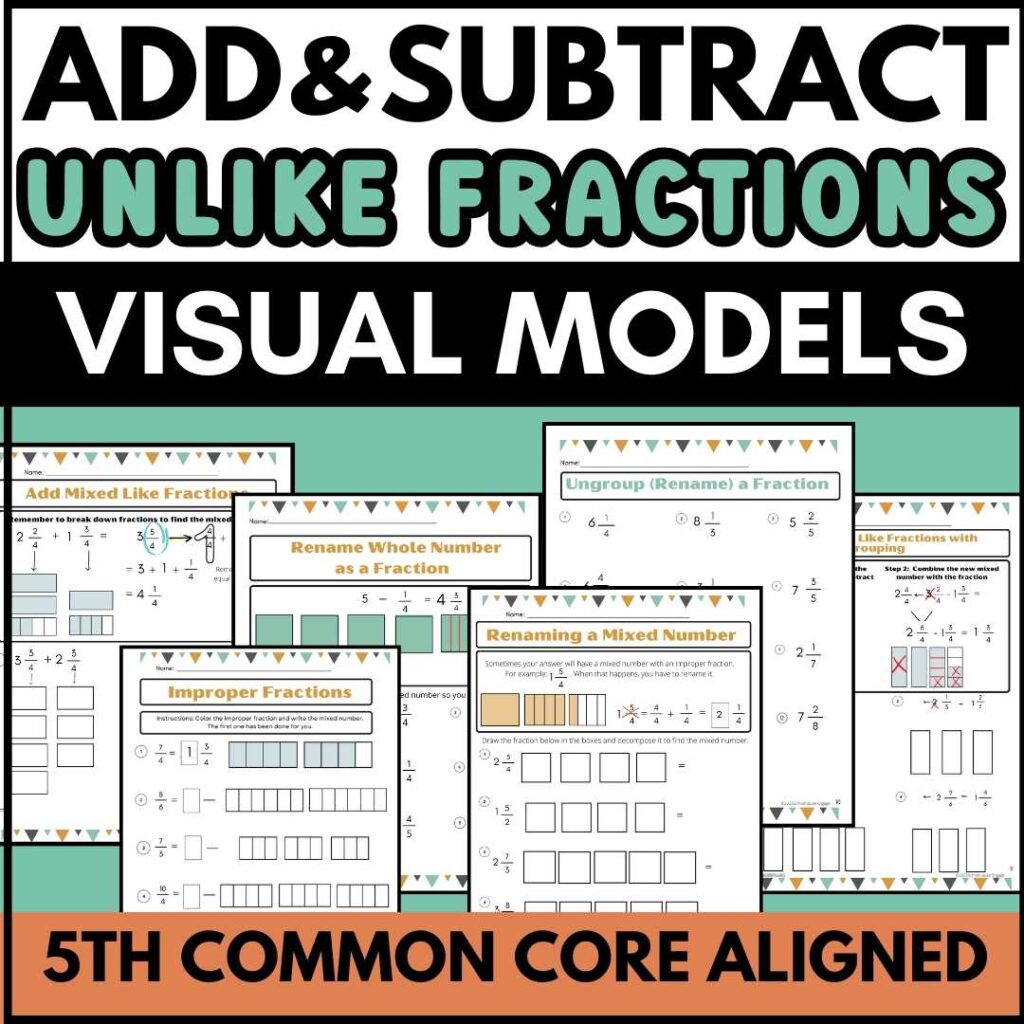
You got this! Giselle

